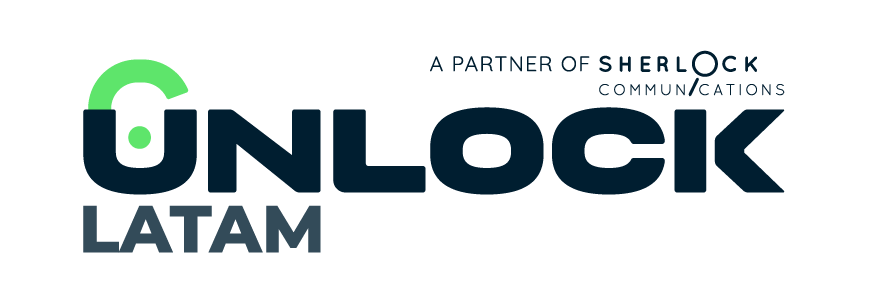B2B prospecting: finding high-quality leads
Although there are very common concepts among those of us who work in different areas of marketing, more than once we take for granted that we all share the same definitions. And it is not like that. It is important to review some terms to understand why they are spread by word of mouth and are the protagonists of conversations in the most modern agencies.
In this case, we will talk about the B2B prospecting. It is interesting to understand what it is, how it works and how it differs from B2C to make the most of this strategy that can take your business to a new level.
What is prospecting in marketing?
Prospect in marketing refers to identifying, searching and qualifying potential customers or prospects interested in a company’s products or services.
It is a fundamental step in the sales process and in the lead generation or potential clients for a company. The main objective of prospecting is to find people or organizations with a need, interest, or problem that can be solved by what the company offers.
What is B2B prospecting?
B2B prospecting refers to the process of identifying, searching, and contacting potential clients or companies to offer products or services at a business level (Business to Business). It functions as a fundamental part of the sales cycle, being the first step to establishing commercial relationships with other companies.
B2B prospecting is an ongoing process that requires research, customization, tracking, and adaptation as you progress through the sales cycle. The key is to understand the needs and challenges of target companies to offer solutions that add value to their operations.
How B2B prospecting works
The first step of B2B prospecting is prospect identification. The process begins by detecting companies that might be interested in the products or services you offer. This involves researching relevant industries, company sizes, geographic locations, and other factors.
Once prospects are identified, key information is collected about these companies, such as their needs, challenges, organizational structure, previous purchase history, and any other details that can help personalize the offer.
Once this information is gathered and analyzed, the development of contact strategies begins: they are planned and coordinated (sales cadence) strategies to start or deepen “conversations” with these prospects. The techniques are many: personalized emails, cold and warm calls, content marketing, networking at relevant events, etc.
In these “impacts”, the initial contact is made with the prospects, presenting the offer or solution in a personalized way according to the information collected. Follow-up is then done to maintain the relationship and respond to any questions or concerns that may arise.
Something fundamental at this stage is the qualification of prospects to prioritize and optimize sales efforts. It is not only evaluated whether the potential client has interest and budget, but also whether they have the authority to make decisions (decision-making power) and the time to make the purchase (timeline).
Finally, those prospects who show genuine interest in the offer can move forward in the sales process until closing.
What is the difference between B2B Prospecting and B2C Prospecting
Although both types of prospecting share similarities in terms of finding and attracting customers, they differ in the way they focus on their audience, the sales processes involved, and the strategies used to capture and convert leads.
To summarize, B2B prospecting and B2C prospecting differ in their approach, strategies, and target audience:
1.Market focus
- B2B Prospecting: Focuses on identifying and attracting other companies as potential customers. The objective is to establish business relationships with organizations to sell products or services that meet the needs of the company.
- B2C Prospecting: It is aimed at individual consumers. It targets people as end customers, offering products or services directly to them for their personal use.
2.Sales cycle and purchasing decisions
- B2B prospecting: This usually involves a longer and more complex sales cycle. Purchasing decisions can involve multiple stakeholders, internal approval processes, detailed considerations about return on investment, business impact, etc.
- B2C Prospecting: Generally involves a shorter, more direct sales cycle. Purchasing decisions are typically faster and are more influenced by emotional factors, individual preferences and personal needs.
3.Personalization and focus
- B2B Prospecting: Requires greater customization and focus on the specific needs and challenges of the company. Prospecting strategies are frequently more detailed and oriented toward specific solutions.
- B2C Prospecting: Often focuses on attracting a broader group of consumers, with more massive and sometimes less personalized marketing strategies. The aim is often to generate an emotional response or connection with the brand.
4.Communication channels
- B2B Prospecting: Communication channels typically include networking, business email, trade shows, and specialized content marketing, among others.
- B2C Prospecting: Channels can be more varied and include social media advertising, targeted email marketing, online ads, and television commercials, among others.
Invest in those who are out of the market and reach them with a good message
According to a study by LinkedIn Research, 95% of B2B buyers are not in the market you usually target. If you want to grow, you must fish outside the fish tank and also address those you do not yet know exist.
You should set your sights on the Serviceable Addressable Market (SAM), the portion of the total market in which your company can effectively market and sell its products or services.
SAM is important for marketing and sales strategies as it allows companies to focus on specific market segments where they can direct their efforts to maximize business opportunities and reach potential customers effectively. This allows them to focus their resources and efforts on areas where they can compete and grow more effectively.
Building and committing to invest in this important group is the only way to ensure that you create mental availability, meaning your brand will be remembered without needing a signal. Mental availability is achieved by creating unique experiences, which directly address the needs of your target audience.
It’s not a small thing: a significant amount of B2B content is boring and fails to speak to the audience as real human beings.
Segmentation and personalization
Improving the customer experience should be a top priority for B2B marketers, and segmentation and personalization are two pillars that make the difference.
Segmenting the B2B audience into specific groups and personalizing messages can improve marketing relevance and effectiveness, which in turn can increase ROI by targeting the right prospects with the right messages at the right time.
Personalization involves adapting strategies, communications, and offers to the specific needs and characteristics of each client or company with which you interact. The effectiveness of B2B marketing campaigns increases by targeting specific audiences with more relevant messages.
Personalization in B2B marketing can be achieved through data collection and analysis, customer segmentation, creation of targeted content, offering personalized solutions, and communication tailored to the individual needs and preferences of each customer or company.
Although it is often associated more with B2C marketing, personalization also plays a crucial role in the B2B space for several reasons:
- Customization allows companies to better understand the individual needs of their customers and offer specific solutions, products, or services that fit their needs. This allows for stronger relationships, as trust and long-term loyalty are strengthened.
- Personalized messages and proposals are more relevant and effective, as they are designed to address each client’s particular problems and challenges. By tailoring interaction, communication, and solutions offered to individual needs, the customer experience is improved, which can lead to greater satisfaction and retention.
Driving efficiency and ROI
In 2024 it will be increasingly important to achieve efficiency and improve the return on investment in B2B marketing. Automation and technology are great allies in that direction.
Knowing and using modern automation tools, robust CRM (Customer Relationship Management) and good data analysis can improve efficiency by streamlining processes and helping you target potential customers more effectively.
Analyzing and optimizing each stage of the B2B sales cadence can improve efficiency by reducing the time it takes to convert leads into customers.
Identifying and tracking key performance metrics (KPIs) is essential to take your business to another level in 2024. It is what allows a clear understanding of the impact and effectiveness of marketing strategies, which helps make more informed decisions to improve the ROI.
Stop, analyze, plan
Nobody can take anything for granted. We will have to study and learn more than ever. Generative AI will have a bold impact on the industry and nothing will be the same.
If in 2024 we want to take our business to a point of success and predictable revenue, we must be attentive to changes and have the flexibility to move quickly.
Mastering Outbound Sales: Strategies for Predictable Revenue Growth
Mastering Outbound Sales: Strategies for Predictable Revenue Growth Nobody said it better than Aaron Ross, author of Predictable Revenue: “You want growth that doesn’t require guessing, hope, and frantic last-minute...
The Role of Sales Development Representatives (SDRs) in Predictable Revenue
The Role of Sales Development Representatives (SDRs) in Predictable Revenue Sales Development Representatives (SDRs) play a crucial role in the implementation of the "Predictable Revenue" framework, initially conceptualized by Aaron...
B2B marketing trends: keys to success in 2024
B2B marketing trends:keys to success in 2024 The focus on what adds value is what makes a big difference in the world's leading companies. Knowing what the emerging best practices...



